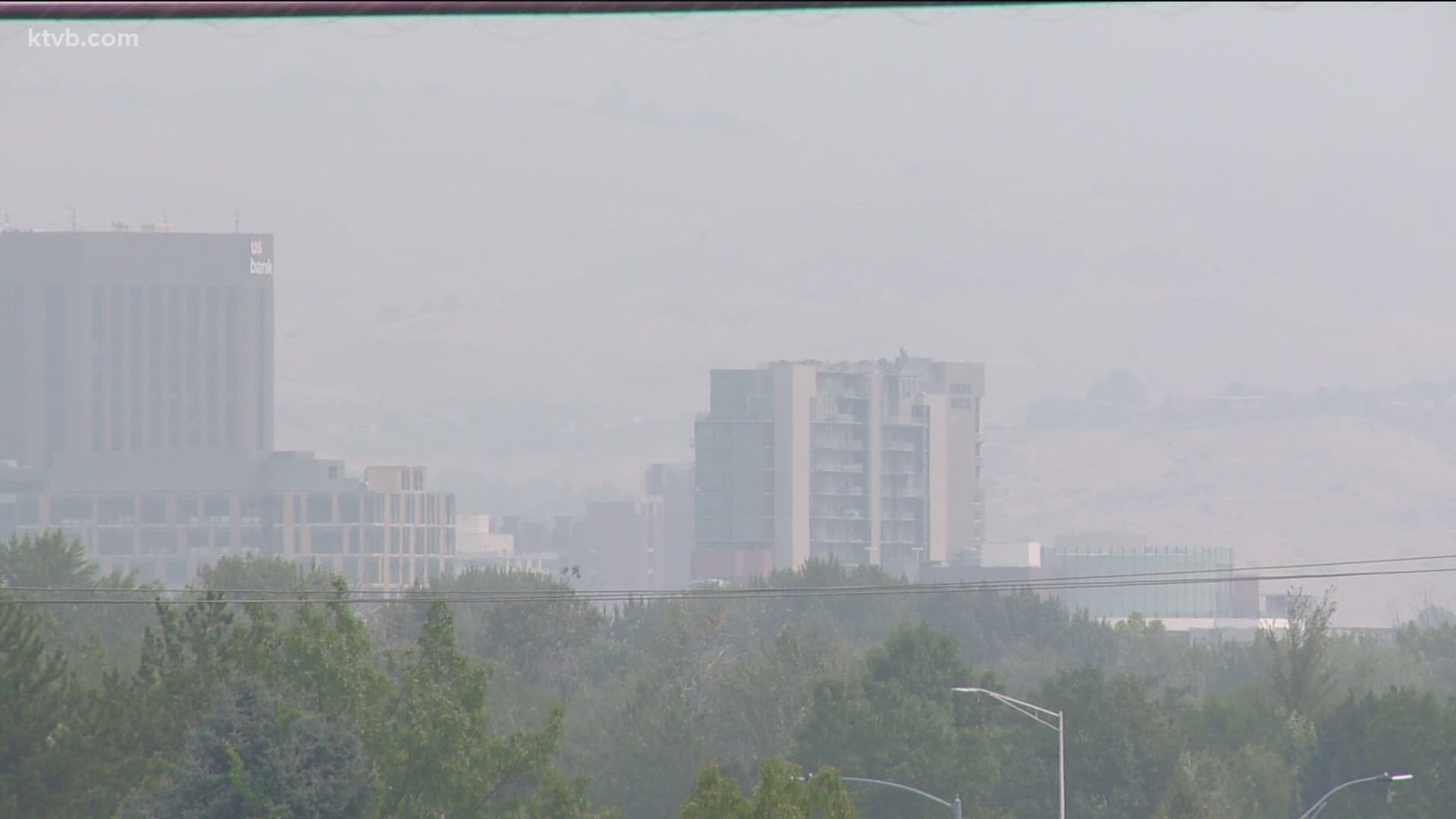BOISE, Idaho — Temperature inversions are common throughout Idaho's mountain valleys, particularly during the winter months.
They often result in gray skies and reduced visibility, with fog or haze. But they can also have a serious impact on our physical health, reducing the quality of the air that we breathe, according to KTVB Meteorologist Jim Duthie.
"In an inversion, the atmosphere is turned 'upside down', with warmer air sitting on top of colder air at the surface, which traps pollution from cars, fireplaces, and factories," Duthie said. "Unfortunately, that's the air we have to breathe. Much of this pollution is liquid droplets, as well as solid particles of dust and smoke."
That type of pollution is known as particulate matter, or PM for short. Other chemical reactions in the atmosphere can also create additional pollutants that affect our health.
The Air Quality Index, or AQI, measures the pollution level and gives a reference for how unhealthy our air is. AQI uses a color-coded scale of air quality ranging from good to hazardous: The higher the AQI, the greater the health concern.
An AQI is in the Yellow or Moderate category gives an early warning that pollution levels are rising. Restrictions may then be placed on burning to reduce particulate matter in the air.
"As pollution levels rise, upgraded alerts are issued using the other colors on the AQI scale," Duthie said.
As Idaho's urban areas continue to grow, increased incidents of reduced air quality during inversions are likely. But for now, there's good news: as spring approaches, longer days with more intense sunlight means fewer and weaker inversions until next fall and winter.
Watch more weather:
See the latest weather forecasts and news in our YouTube playlist:

